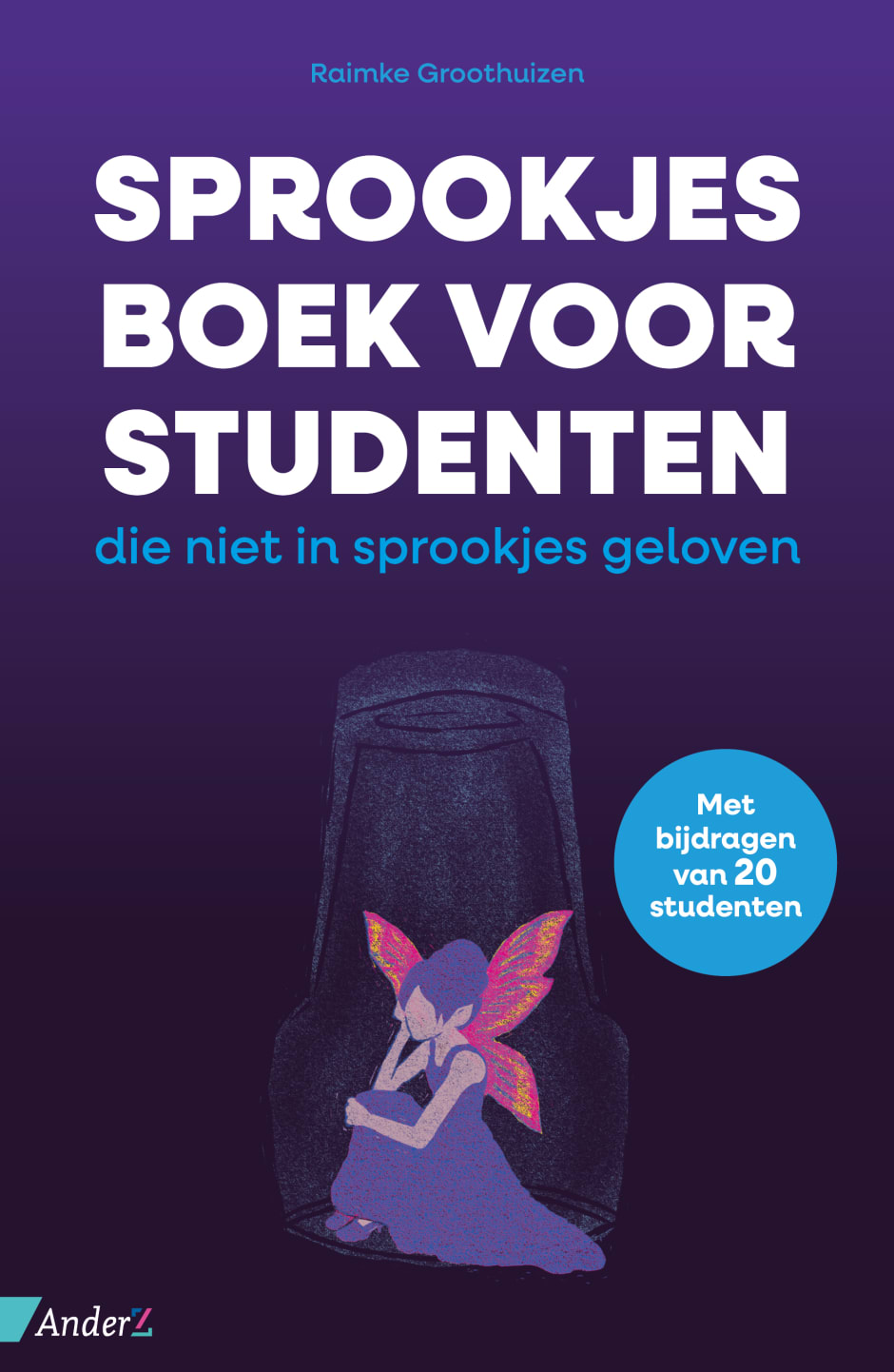
Raimke Groothuizen wrote a book of fairy tales for students: “Once upon a time... a troll with performance pressure”
Teacher Raimke Groothuizen recently published a book of fairy tales for students. Through stories about wizards, witches, and giants, she wants to provide insight into the problems of this target group. “'Students are often written about negatively, while fairy tales, on the other hand, are hopeful.'”
For writer Raimke Groothuizen (38), it was a teacher's remark that she had no talent. For another, a VMBO recommendation, the feeling of being ignored or pressure from the environment. These are the kinds of things that, consciously or unconsciously, can linger for a long time in the minds of students and can be formative for their self-image, Groothuizen observes. Not infrequently, this leads to them becoming mentally stuck.
She used to see it among her fellow students and now, as a teacher of Communication at Avans University of Applied Sciences, among her own students. With her new book - The Book of Fairy Tales for Students - Who Don't Believe in Fairy Tales - she wants to give hope back to this target group (hence the subtitle) by showing that they are not the only ones struggling with their studies, with themselves, or with others. She does this through 12 fictional fairy tales, each reflecting personal stories of real students.
For example, student Selène recognizes herself in the story of the striving knight, who, like her, sees a contest in everything, including school and study. And Dunya can identify with the fairy tale of the troll on the right path because as a student from a different background, she has also often felt like an outsider whose abilities are systematically underestimated.
“The truth is that you then have to travel a path with more obstacles,” Dunya writes in Groothuizen's book. “And maybe that doesn't sound nice,” she continues, “but a journey with more obstacles will mold someone into a stronger, smarter, and better person.” It's exactly the note Groothuizen wants to hit in her book of fairy tales: to first outline the students' struggles, then hope for a better future.
What are the most pertinent problems of students that you wanted to highlight in the book?
“Performance pressure is one of them. Some students put pressure on themselves because they are eager to transcend their environment or, on the contrary, experience pressure because of expectations in their environment. At the same time, there is the issue of social safety. Students are intimidated or antagonized by people who outrank them in the hierarchy. And lastly, discrimination, based on race, that is, but also gender.”

Why did you choose to highlight these themes through your book of fairy tales?
“There were three reasons for this. First, I thought how funny it would be to write a book of fairy tales for an audience for whom fairy tales are not usually written. There was a personal challenge in that, as everything in my life always stems from the question: Could I do it? Besides, fairy tales are hopeful. And that is really needed if you look at how students are talked about in the media. It's usually negative, especially about Generation Z. Finally, if I
were to write about real people, instead of wizards and witches, it might be distracting. So the metaphor is instrumental to the content.”
The fairy tale characters reflect different types of students in society. Wizards, for example, belong to the elite, have rich parents, and pursue studies such as art or linguistics. Trolls belong to the lowest social class, suffer from opportunity inequality, and have difficulty finding a job because of their name (read: ancestry). Is it important to differentiate students into groups?
“Yes, I think differentiating groups in society is necessary so that you can move away from that. So that you can make a conscious choice as a student, to break with the status quo.”
But doesn't that lead too much to identity thinking?
“Oh, I think that's a good question. I hope not. But if dividing people into groups led to discussion, that could also make for a very valuable conversation. For example, there is a lot of racism in the education system. I see that come up every day. By talking about differences between groups, such problems can be better addressed.”
What story has stuck with you the most?
“There was one story in which I wanted to paint the worst case scenario. In it, things almost ended disastrously for a fairy tale character. When I let a student named Nerys read that, I promptly heard, ‘That's my story.’ Then I thought, wow, that's intense, that my made-up scenario of doom can be so close to reality. The person could identify with it enormously. Ultimately, Nerys' personal story was linked to this fairy tale.”
After writing this book, what would you recommend to such students?
“Seek help if you get stuck. You can see that in the 12 stories the students have written. No one gets out on their own. For some, it's just a friend who listens to you, for others family and friends help a lot. The role of parents is also very important in this. Many students don't like their studies after only six months, but have attended an open day with their parents and therefore don't dare tell their parents. Because ‘they are already so busy.’ You hope that parents will ask more often how their child is doing. And that they then keep their mouths shut to actually listen and engage.”
Raimke Groothuizen, The Book of Fairy Tales Students - Who Don't Believe in Fairy Tales (2024) ISBN: 9789462962279. Publisher AnderZ. Price: € 24,99

